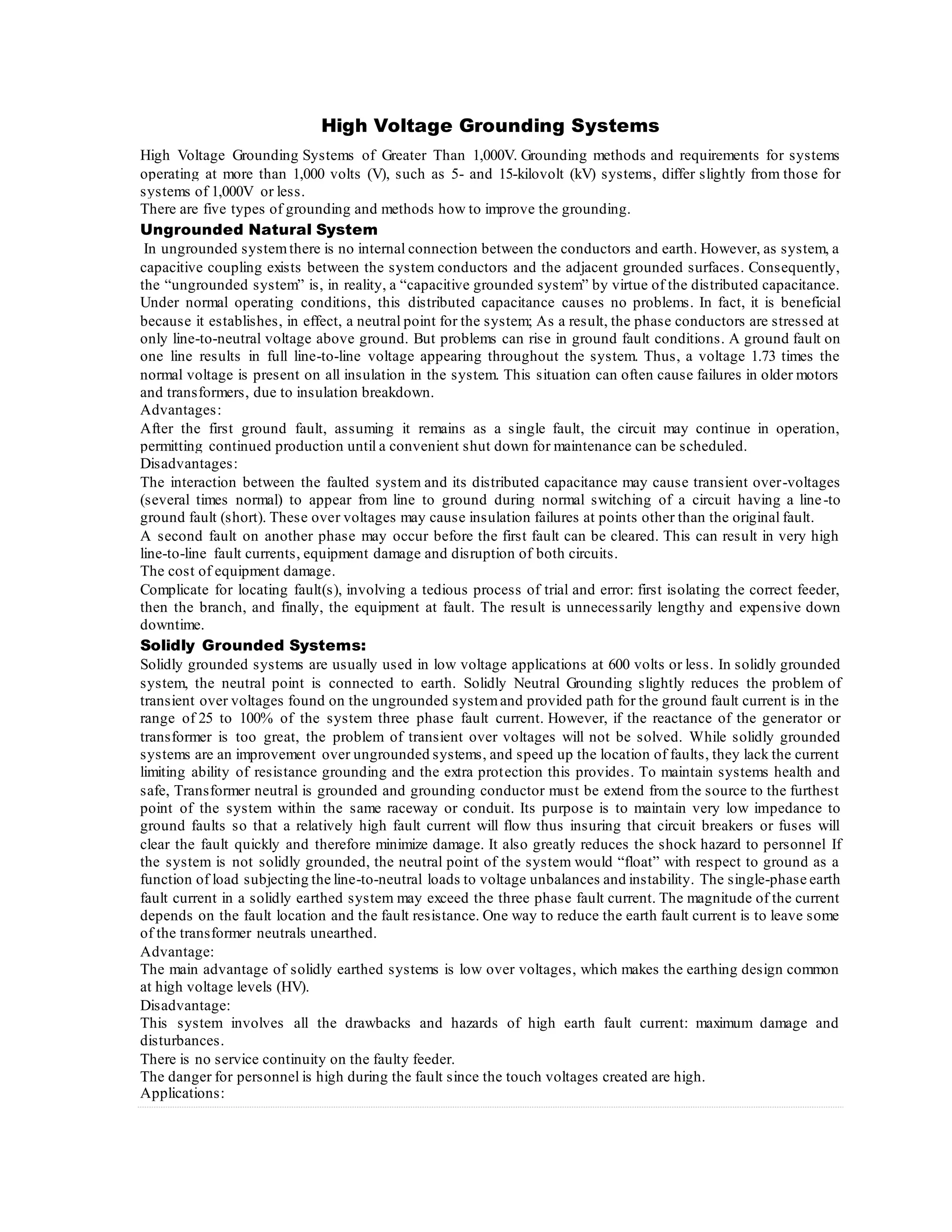There are five main types of high voltage grounding systems: ungrounded, solidly grounded, resistance grounded, resonant grounded, and high resistance grounded. Resistance grounding limits fault currents to prevent equipment damage while still allowing faults to be detected. It works by connecting a grounding resistor between the neutral and ground to limit fault current to a safe level according to Ohm's law. This prevents damage but ensures protective devices can still operate to clear faults.


